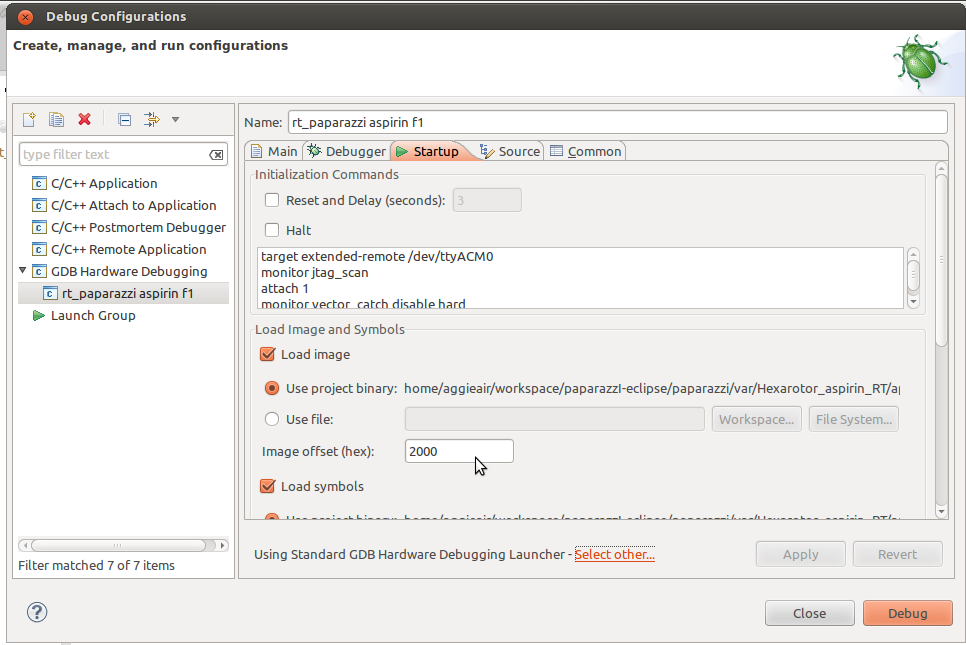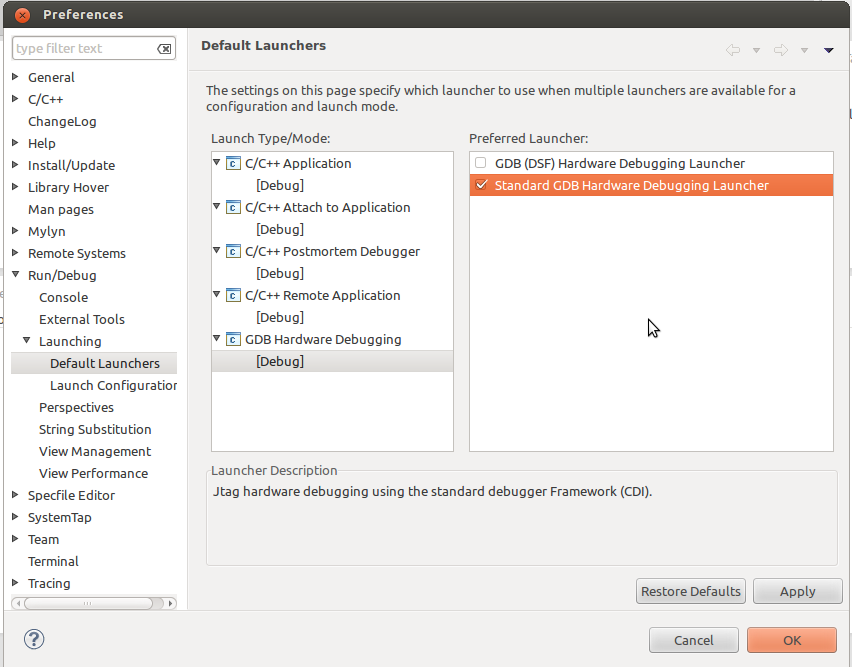Difference between revisions of "RT Paparazzi"
| Line 11: | Line 11: | ||
= Paparazzi with ChibiOS/RT = | = Paparazzi with ChibiOS/RT = | ||
RT Paparazzi is based on ChibiOS/RT [http://chibios.org/dokuwiki/doku.php]. ChibiOS/RT supports basically all architectures that standard Paparazzi does (see [http://chibios.org/dokuwiki/doku.php?id=chibios:architectures]), which makes both systems compatible. Since RTOS makes handling multiple I/O easier, but comes with some extra overhead (context switching, kernel code), it gives most leverage to to STM32 F1xx and F4xx based autopilots ([[Lisa/M_v20]], [[Lisa/S]], [[STM32F4_Discovery]], [[KroozSD]]...). | RT Paparazzi is based on ChibiOS/RT [http://chibios.org/dokuwiki/doku.php]. ChibiOS/RT supports basically all architectures that standard Paparazzi does (see [http://chibios.org/dokuwiki/doku.php?id=chibios:architectures]), which makes both systems compatible. Since RTOS makes handling multiple I/O easier, but comes with some extra overhead (context switching, kernel code), it gives most leverage to to STM32 F1xx and F4xx based autopilots ([[Apogee/v1.00]],[[Lisa/M_v20]], [[Lisa/S]], [[STM32F4_Discovery]], [[KroozSD]]...). | ||
The development of RT Paparazzi with ChibeOS was started by the AggieAir team [http://aggieair.usu.edu/] at Utah State University. | The development of RT Paparazzi with ChibeOS was started by the AggieAir team [http://aggieair.usu.edu/] at Utah State University. | ||
Revision as of 21:25, 15 January 2014
Real Time (RT) Paparazzi
Introduction
the RT Paparazzi initiative is a step towards extended flexibility for the core autopilot. In a real time operating system (RTOS) [1] multiple threads are available, which are doing specific jobs e.g. a telemetry thread, a radio thread, a failsafe thread, at a defined rate. Unlike bare-metal application which uses interrupt driven timers for timing tasks, real time OS has a kernel which takes care of scheduling and running the threads. Having a kernel, it is possible to set priority of each thread, how much memory it takes etc.etc. which gives the developer more control over timing and resource managment.
Besides kernel, a typical RTOS also has a harware abstraction layer (HAL) which stands between user application and actual hardware, so the core autopilot developer doesn't have to worry to much about writing drivers for the sensor to use.
One of the strengths of Paparazzi is it's modularity - combining this with precise timing, scheduling and resource management a RTOS brings along, Paparazzi is now in a position to exceed even the leading commecial closed-source UAs autopilots.
Paparazzi with ChibiOS/RT
RT Paparazzi is based on ChibiOS/RT [2]. ChibiOS/RT supports basically all architectures that standard Paparazzi does (see [3]), which makes both systems compatible. Since RTOS makes handling multiple I/O easier, but comes with some extra overhead (context switching, kernel code), it gives most leverage to to STM32 F1xx and F4xx based autopilots (Apogee/v1.00,Lisa/M_v20, Lisa/S, STM32F4_Discovery, KroozSD...).
The development of RT Paparazzi with ChibeOS was started by the AggieAir team [4] at Utah State University.
Getting the sourcecode
Most recent code is available under rt_paparazzi branch from Paparazzi Git repo [5], however you can check these two repositories too ([6] and [7])
Debugging with an Eclipse IDE
Having a good development and debugging environment is a must for developing RT embedded system. The steps of setting up Eclipse IDE are described here [8] and here [9].
An alternative guide is for example here [10]
Just a few notes to the process:
- install GCC Arm Embedded toolchain [11] (recommended anyway for Paparazzi since v 5.0)
- get Black Magic probe from Blacksphere [12], it will make your life easier
- in Creating a GDB Debug Configuration use the following commands for Black Magic Probe:
target extended-remote /dev/ttyACM0 monitor jtag_scan attach 1 monitor vector_catch disable hard set mem inaccessible-by-default off monitor option erase set print pretty
(for Lisa/Lia F4 board use swdp_scan instead of jtag_scan)
- if you are using luftboot, don't forget to add image offset into the debug configuration:
- don't forget in "Eclipse->Window->Preferences->Run/Debug->Launching->Default Launchers->GDB Hardware Debugging" set preferred launcher to "Standard GDB" (otherwise the ChibiOS/RT plugin won't work, tested in Eclipse Kepler Service Release 1):
- to use ChibiOS/RT debug module for Eclipse, download ChibiStudio (it is for Windows only) from SourceForge [13], extract it and from ChibiStudio/eclipse/plugins copy
org.chibios.tools.eclipse.config_1.2.1.jar org.chibios.tools.eclipse.debug_1.0.8.jar
to your eclipse/plugins directory. Restart Eclipse and in "Help->About Eclipe->Installation Details->Plugins" you should see both chibios plugins. Enable the plug-in while in the "Debug" view under: Window->Show View->Other...->ChibiOS/RT->ChibiOS/RT" (see [14] for details)
Paparazzi on Linux
Taking the ARDrone 2 base install is a good example how Paparazzi could be used to run the core Autopilot executable
RT Paparazzi at ENAC
There is an internal project at ENAC of a RT Paparazzi
RT Paparazzi on Nuttix
There are all reasons to assume the current Paparazzi code can run perfectly on Nuttix, only nobody so far bother to start this effort since the general consensus at the moment is that CHibeOS is a better choice for an RT operationg system

